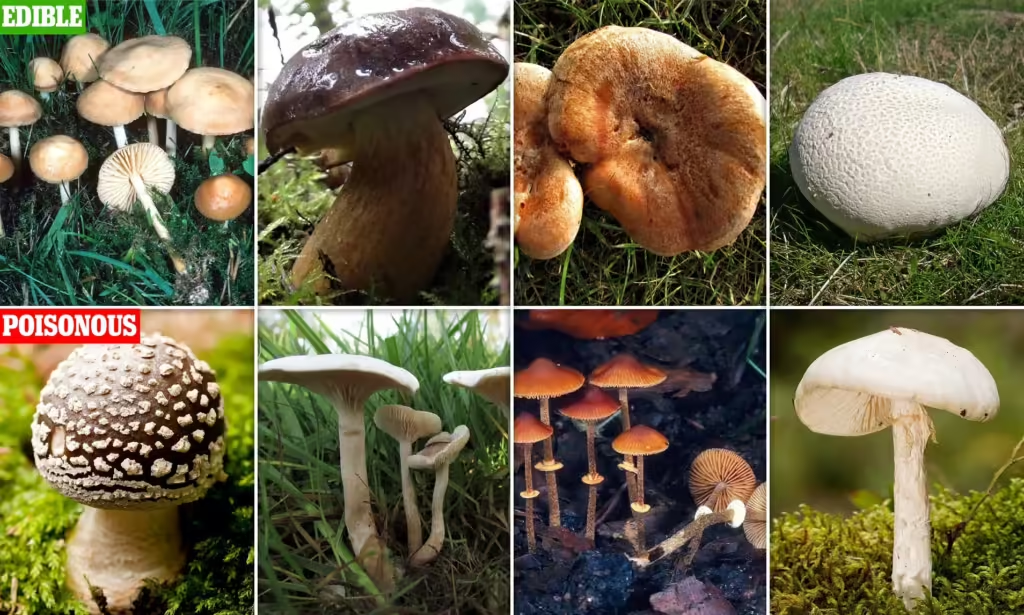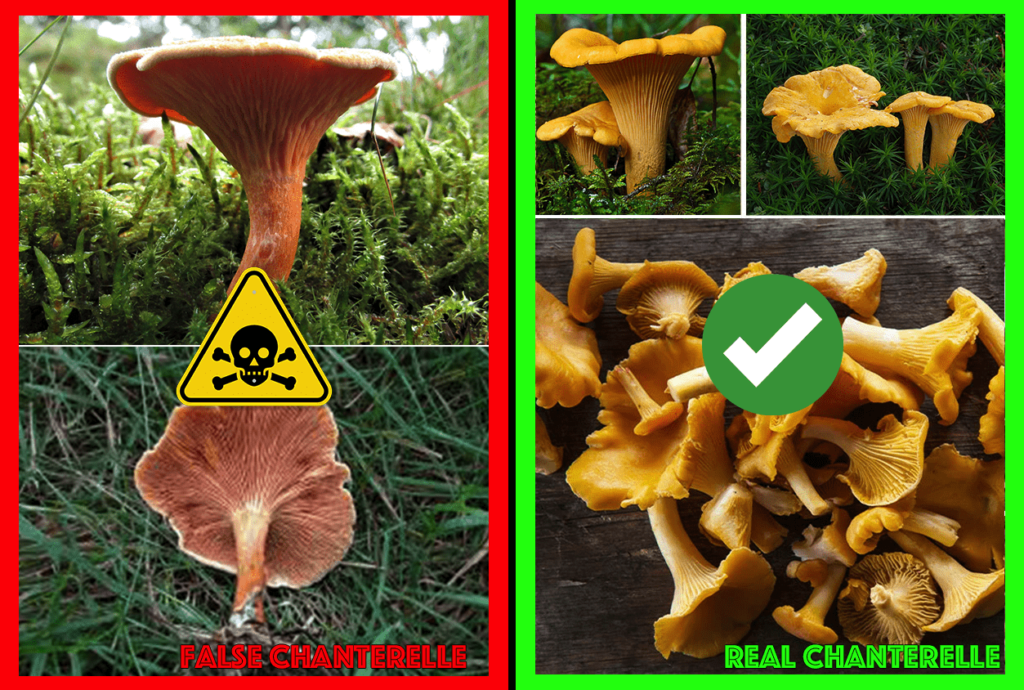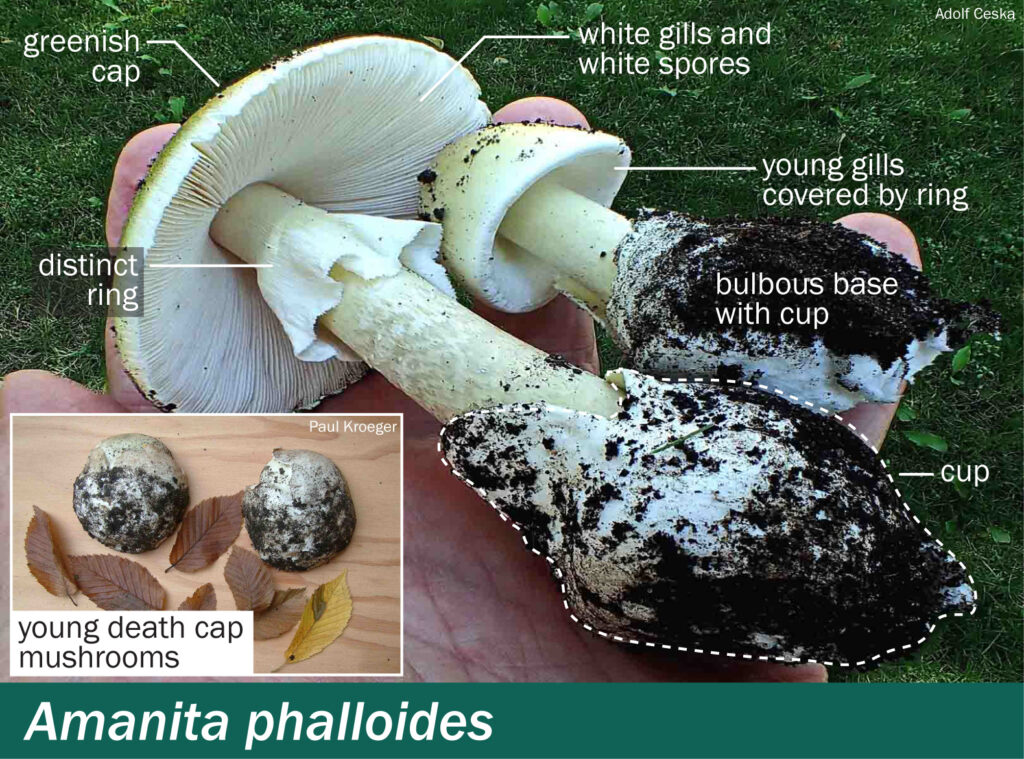How to Identify Edible vs. Poisonous Mushrooms: A Beginner’s Guide
Mushrooms are a diverse and fascinating group of fungi that can be found in many environments around the world. While many mushrooms are edible and delicious, some are highly toxic and can cause severe illness or even death. Foraging for mushrooms can be a rewarding hobby, but it requires knowledge, caution, and respect for nature. This guide aims to provide beginners with essential information on how to identify edible versus poisonous mushrooms, ensuring a safe and enjoyable foraging experience.

Understanding Mushroom Biology
Before diving into identification, it’s helpful to understand a bit about mushroom biology. Mushrooms are the fruiting bodies of fungi, which are organisms that belong to a separate kingdom from plants and animals. They reproduce through spores and can be classified into several categories, including:
- Edible Mushrooms: Safe for consumption and often prized for their flavor and nutritional value.
- Toxic Mushrooms: Can cause illness, ranging from mild gastrointestinal discomfort to severe toxicity or death.
- Psychoactive Mushrooms: Contain compounds that can alter perception, mood, or cognitive function (e.g., psilocybin mushrooms).
Basic Mushroom Anatomy
Understanding mushroom anatomy is crucial for identification. Key parts of a mushroom include:
- Cap: The top part of the mushroom, which can vary in shape, size, and color.
- Gills: Located beneath the cap, these are the structures where spores are produced. Gills can be free (not attached to the stem) or attached.
- Stem (Stipe): The stalk that supports the cap. The stem can vary in thickness, length, and texture.
- Ring (Annulus): A ring that may encircle the stem, left behind by the cap as it matures.
- Volva: A cup-like structure at the base of some mushrooms, which can indicate a toxic species.
- Spores: The reproductive units of fungi, often visible as a powdery substance on the gills or surface.
General Guidelines for Identification
1. Know the Common Edible Mushrooms
Familiarize yourself with some of the most common edible mushrooms. Here are a few examples:
- Button Mushroom (Agaricus bisporus): Commonly found in grocery stores; white or brown caps.
- Shiitake (Lentinula edodes): Brown, umbrella-shaped caps with a rich flavor, commonly used in Asian cuisine.
- Oyster Mushroom (Pleurotus ostreatus): Fan-shaped, usually gray or white, with a delicate flavor.
- Chanterelle (Cantharellus cibarius): Golden-yellow, trumpet-shaped mushrooms with a fruity aroma.
- Porcini (Boletus edulis): Brown cap with a thick stem, prized for its rich flavor in Italian dishes.
2. Learn About Common Toxic Mushrooms
Understanding the most dangerous mushrooms can help you avoid them. Notable toxic species include:
- Death Cap (Amanita phalloides): Often green or yellow; responsible for the majority of mushroom poisoning fatalities.
- Destroying Angel (Amanita bisporigera): White and deadly; resembles edible mushrooms but is extremely toxic.
- False Morel (Gyromitra spp.): Irregular, lobed shape; some varieties are highly toxic.
- Fly Agaric (Amanita muscaria): Iconic red cap with white spots; psychoactive and potentially toxic.
3. Use a Reliable Field Guide
Investing in a good field guide is essential for mushroom identification. Look for guides that include clear photographs, descriptions, habitat information, and seasonal data. Some reputable field guides for North America include:
- Mushrooms Demystified by David Arora
- The New Mushroom Handbook by Peter Jordan
- Mushrooming Without Fear by Alexander Schwab
4. Observe the Environment
Mushrooms grow in various habitats, including forests, fields, and gardens. Understanding their preferred environments can help you locate them. Key factors to consider include:
- Season: Different mushrooms appear at different times of the year. For example, chanterelles typically fruit in late summer to early fall.
- Location: Some mushrooms thrive under specific types of trees (e.g., morels near elm trees, chanterelles under oaks).
- Weather Conditions: Rainy seasons often lead to increased mushroom growth.
5. Note the Physical Characteristics
When identifying mushrooms, pay attention to various physical traits:
- Color: The cap color, gill color, and stem color can vary widely.
- Shape: Observe the cap shape (convex, flat, or bell-shaped) and stem thickness.
- Texture: The surface texture of the cap and stem (smooth, fuzzy, scaly) can provide clues.
- Size: Measure the size of the cap and stem, as this can vary significantly among species.
Identification Process
1. Start with a Good Observation
When you find a mushroom, start with a thorough observation:
- Take a photo or make notes about its size, shape, and color.
- Observe the habitat: Are there trees nearby? Is it growing in soil, wood, or grass?
- Check the season and weather conditions.
2. Examine the Gills and Spores
Gills are crucial for identification:
- Color: The color of the gills can help differentiate species. For instance, white gills may indicate one type, while brown or pink gills may suggest another.
- Attachment: Are the gills free from the stem, or do they attach to it? This can be an important identifying feature.
- Spores: If possible, perform a spore print by placing the cap gills-down on paper overnight. The color of the spore print can aid in identification.
3. Check for Rings and Volva
Look for a ring or volva:
- Ring (Annulus): A ring around the stem can indicate certain species, such as the button mushroom.
- Volva: A cup-like structure at the base can suggest a potentially toxic mushroom, like the death cap.
4. Compare with Field Guide
After gathering all the information, compare your observations with a field guide. Look for a mushroom that matches your findings in terms of color, shape, gills, and habitat. Cross-reference multiple sources if possible.
5. Consult Experts
If you’re uncertain about a mushroom’s identity, consider consulting local mycologists or joining a mushroom foraging group. Online forums and social media groups dedicated to mushroom identification can also be helpful, but be cautious of unverified advice.
Safety Precautions
1. Never Rely on Just One Feature
Mushroom identification requires considering multiple characteristics. Relying on a single feature can lead to misidentification.
2. Avoid Eating Wild Mushrooms
If you’re new to foraging, it’s best to avoid eating any wild mushrooms until you are completely confident in your identification skills. Consider starting with cultivated varieties available at grocery stores or farmers’ markets.
3. Start with a Known Species
Once you feel comfortable with identification, begin by trying a small amount of a well-known edible mushroom. Monitor for any adverse reactions before consuming larger quantities.
4. Keep a Journal
Maintaining a foraging journal can help track your experiences, successful identifications, and any adverse reactions to mushrooms. This practice reinforces learning and aids in future foraging trips.
5. Be Cautious with Medicinal or Psychoactive Mushrooms
Some mushrooms have medicinal properties or psychoactive effects. If you are considering using these, research thoroughly and consult experts, as they can interact with medications or have unpredictable effects.
Conclusion
Identifying edible versus poisonous mushrooms is a skill that requires patience, practice, and respect for nature. By understanding mushroom biology, familiarizing yourself with common species, and following the identification process outlined in this guide, you can enjoy the rewarding experience of foraging for mushrooms safely. Remember, when in doubt, it’s always best to err on the side of caution and consult experts or avoid consumption. With time and experience, you’ll become more confident in your abilities and enjoy the many benefits that mushrooms have to offer. Happy foraging!






